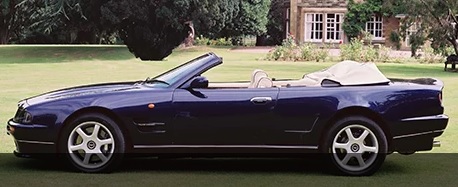

Coupe, 2 Doors, 4 Seats
557 Hp @ 6500 rpm.
104.3 Hp/l
5340 cm3
325.87 cu. in.
8, V-engine
Rear wheel drive,
4745 mm
186.81 in.
1924 mm
75.75 in.
1920 kg
4232.88 lbs.
| Brand | Aston Martin |
|---|---|
| Model | V8 Vantage (Convertible) |
| Version | V8 Vantage (II) |
| Engine version | 5.3 i V8 32V (557 Hp) |
| Year production start | 1993 |
| Year production end | 2000 |
| Vehicle type | Coupe |
| Horsepower RPM | 557 Hp @ 6500 rpm. |
| Acceleration 0 - 100 kmh sec | 4.7 sec |
| Curb weight kg -lbs total |
1920 kg4232.88 lbs. |
| Overall length mm - inch |
4745 mm186.81 in. |
| Doors | 2 |
| Cam configuration | OHC |
|---|---|
| Engine position and orientation | Front, Longitudinal |
| Cylinders | 8 |
| Position of cylinders | V-engine |
| Displacement (liters) |
5340 cm3325.87 cu. in. |
| Eng. horsepower RPM | 557 Hp @ 6500 rpm. |
| Horsepower per litre | 104.3 Hp/l |
| Weight / horsepower kg/hp - hp/tons |
3.4 kg/Hp290.1 Hp/tonne |
| Weight / torque kg/Nm - Nm/tons | 2.6 kg/Nm, 388 Nm/tonne
2.6 kg/Nm388 Nm/tonne |
| Torque Nm RPM lb-ft RPM |
745 Nm @ 4000 rpm.549.48 lb.-ft. @ 4000 rpm. |
| Bore (mm in) |
100 mm3.94 in. |
| Stroke (mm in) |
85 mm3.35 in. |
| Compression ratio | 8.2 |
| Fuel delivery system | Multi-point indirect injection |
| Fuel type | Petrol (Gasoline) |
| Valvetrain | 4 |
| Engine aspiration | Mechanical supercharging (Compressor) |
| Drive configuration | Rear wheel drive |
|---|---|
| Transmission | 6 |
| Front brakes | Ventilated discs |
|---|---|
| Rear brakes | Ventilated discs |
| Brake control | Ventilated discs |
| Anti-lock brake system | ABS (Anti-lock braking system) |
| Front suspension | Coil spring |
|---|---|
| Rear suspension | Helical spring |
| Wheels size | 285/45 ZR18 |
|---|
| Passengers seats | 4 |
|---|---|
| Trunk space min liter | cu. Ft. |
315 l11.12 cu. ft. |
| Overall length mm - inch |
4745 mm186.81 in. |
|---|---|
| Overall width mm -inch |
1924 mm75.75 in. |
| Overall height mm -inch |
1330 mm52.36 in. |
| Wheelbase mm - inch |
2610 mm102.76 in. |
| Track width front mm - inch |
1540 mm60.63 in. |
| Track width rear mm - inch |
1580 mm62.2 in. |
| Curb weight kg -lbs total |
1920 kg4232.88 lbs. |
|---|---|
| Fuel tank liters | gallons |
105 l27.74 US gal | 23.1 UK gal |
8 CYLINDER V-Engine
https://www.thecarspec.net/components/engine/8-cylinders-v